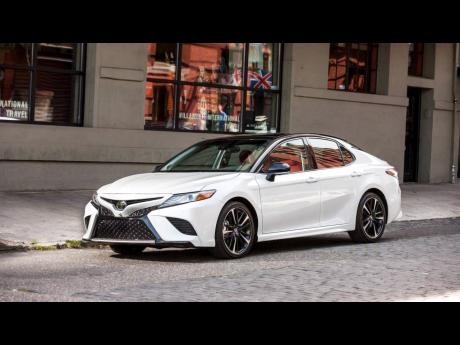New York Auto Show: SUVs rule the auto industry, but is a peak coming?
(TNS)
NEW YORK - America is being flooded with boxes on wheels - and the tide shows no sign of letting up.
But as another auto show is about to bring even more sport-utility vehicle choices to showrooms, it raises questions: How many SUV models are too many before consumers cry uncle and dealer lots become overloaded? And are we close to reaching a peak?
For now, crossovers and SUVS are salvaging the industry's growth. Sales of SUVs and sport wagons rose six per cent last year, a stark contrast to a 10.9 per cent decline in car sales, industry tracker Autodata reports. Overall vehicle sales declined 1.8 per cent.
General Motors and Toyota already offer at least a dozen SUV models each between all their divisions. Other automakers are rushing to make sure they have an SUV in every size category. But again risking overload, this week's New York International Auto Show will bring more.
They'll range from Cadillac's new XT4, filling in a gap for the GM luxury brand, to Volkswagen's five-passenger version of its big Atlas SUV. Hyundai, a brand that has acknowledged it needs more SUV choices, will bring three new or refreshed models.
The most prominent introduction will be the next generation of Toyota's hugely successful RAV4, a compact SUV that overtook the Camry last year as the best-selling vehicle in its US lineup. RAV4 gets sharp new looks and a little wider and shorter, with better fuel economy.
If there's a ceiling to the number of SUVs Americans are ready to handle, automotive planners don't see it.
"The market for SUVs continues to grow," said Erich Merkle, a sales analyst for Ford. He says 44 per cent of new vehicles sold to individual customers last year were SUVs, up four percentage points over 2016. The share has doubled since 2000. "It's been growing pretty quick."
Ford announced a shake-up in its production plans this month, aimed at dramatically boosting SUV and pickup offerings. Predicting SUVs could make up half the US retail auto market by 2020, Ford said it plans to offer a lineup of eight, including five hybrids and one pure electric. It said it would shift $7 billion currently going to car development into SUVs.
It's a market that's not only getting crowded, but one in which it's harder to stand apart.
It won't take much for Toyota's RAV4 to get a boost from the auto show. It already has massive sales - 407,594 sold last year, making it the nation's most popular vehicle after the Detroit Big 3's full-size pickups - and a reputation for reliability. Others, however, will have to be different to make a dent.
Both Land Rover and Nissan, for instance, have tried out convertible versions of their small SUVs in the US, though neither became hits. Ford plans to tap the off-road market by reviving its Bronco model. Jaguar comes with an electric version of its small SUV, the iPace. The permutations are likely to go on and on.
"Before, SUVs were their own niche. Now, that's not the case," said Jessica Caldwell, sales analyst for car-buying website Edmunds.com.
America's sudden affection for crossovers comes in sharp contrast to a decade ago when the nation's gas prices peaked above $4 a gallon and drove thousands of SUV owners back into cars. Used SUV prices plummeted, and automakers backed away from them.
Now the market is being driven partly by demographics: Millennials and Boomers alike need the interior space they provide for kids, grandkids or hobbies and embrace the way SUVs have transformed from a heavy truck chassis and driving feel to being more like cars.
"All SUVs now are tall station wagons," said Karl Brauer, executive publisher for Cox Automotive. "They are SUV-shaped cars."
That's because they've been redesigned to drive more like cars. Yet they retain the height and command of the road that drivers demand.
But Brauer does see a tipping point when it comes to sales.
In the wake of their sudden popularity, a wave of SUVs will hit the market as three-year leases end and drivers return the mildly used vehicles to dealers, he said. That could swamp lots, lowering prices and making it tougher to attract buyers to new, more expensive models.
As a result, Brauer said automakers will need to add more features, innovate or be willing to discount to boost sales, something he previously said might have been taken for granted.
For now, though, SUVs are riding high in the auto market, with little to stop them - even the biggest models. Ford said its dealers only had a 13-day supply of full-size Expeditions in February, making it one of its most in-demand models.
"The market can continue to absorb SUVs," Caldwell said, "as they have become the replacement for cars."




